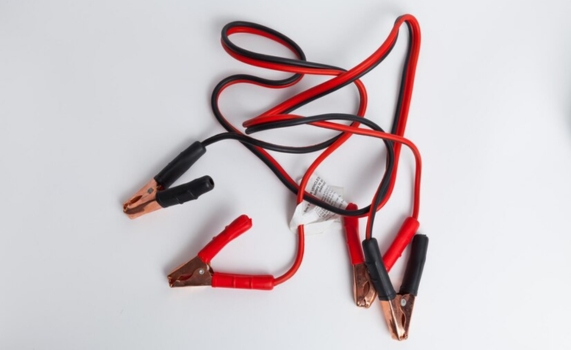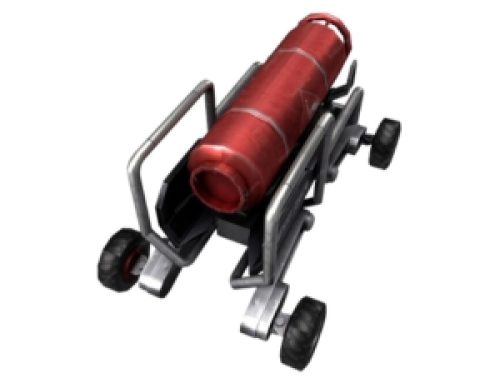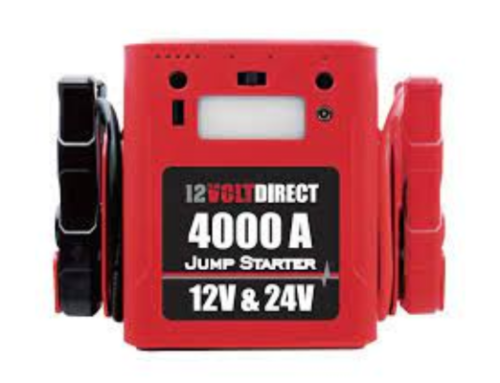How to Use Jumper Cables?
Jumper cables are essential tools used to start a car with a dead battery. When your car won’t start, these cables can connect your battery to another car’s battery. This process is known as jump-starting a car. Understanding how to use jumper cables safely is important for every driver. Jumpers with thick cables and heavy clamps are the best choice since they last longer than flimsy ones. So, with the help of another vehicle you can kickstart your car battery using jumper cables.

Checklist Before Jump-starting
Simply having a set of jumpstart cables isn’t enough—you need to follow some important steps to ensure a safe and successful jumpstart. Whether you’re experienced or new to this process, here’s a checklist to follow before you begin:
Here are the things to note:
- Battery: Before beginning the process, it is a must to check the battery for any leaks, damage, corrosion, and whether or not it is frozen. If you find any of these issues, get help from a professional to avoid hazards.
- Metal Objects and Open Flames: Make sure there are no metal objects, such as watches, phones, or wrenches, near the battery, as these can cause sparks. Avoid smoking or using open flames around the vehicles.
- Key: Make sure to remove the key from the ignition of the car with the dead battery. This prevents any accidental starting while you are connecting the jumper cables.
- Reference Manual: Different cars may have unique requirements for jump-starting. Go through the instructions and find the procedure on how to jump-start the battery of your vehicle.
- Battery Voltage: You must ensure that the voltage of your car’s battery and the one you are using to transfer the charge are similar.
How to Connect Jumper Cables?
If you are new to reviving your vehicle’s battery let’s get on with how to use jumper cables to start a car with the help of another.
Given below is the process of connecting and jumpstarting a car:
- Get a Functional Vehicle Ready: The first step involves getting a car with a healthy battery ready and parking it next to the problematic one. Ensure that the front of the operational car is right in front of the non-operational one so that the jumper cables can be easily connected. The connection gets easier when both are placed face-to-face in the same direction. Next, lift the hoods of both vehicles and get them ready for the next step.
- Prepare to Recharge the Dead Battery: You need to check whether both batteries are of the same voltage. Next, put on the protection gears for your hands and eyes. Thoroughly check the terminals on each battery of both vehicles and clean any dirt or grim on it with a small brush. Find the negative (–) and positive (+) terminal by looking for the symbols on the battery. Understanding these signs is vital for the proper connection of the booster jumper cables.
- Connect the Jumper Cables: You must be aware of the direction in which you connect your battery booster cables. If you connect the two sets of battery terminals wrong, it could result in a short circuit, cause sparking, and even melt your jumpstart cables. Moreover, it can completely destroy the batteries and electronic units of both cars.
Please see below how to connect booster jumper cables to each car:
- First, connect the red cable clamp to the positive terminal (+) of the functional vehicle’s battery.
- Securely attach the other end of the red cable to the positive terminal (+) of the dead battery.
- Next, connect the black cable clamp to the negative terminal (–) of the functional vehicle’s battery.
- Finally, attach the remaining black clamp to a metal, unpainted part of the car with the dead battery. This acts as a ground connection and helps prevent sparks.
Note: Ensure that you wear your safety guards while connecting the cables to the terminals since it could rarely pose some risks.
- Jumpstart the Impaired Vehicle: Inspect both cars again to make sure that the battery booster cables are connected well and tight to the right terminal. Now, turn on the functional vehicle and wait for a few seconds. Next, try to start the dead car. If it is showing a slight sign of life but does not start completely, wait for 10 minutes and retry. If the issue was a dead battery, the car should start without further problems.
- Detach the Jumper Cables: Once the dead vehicle is running, you can disconnect the cables in reverse order:
- Remove the black clamp from the grounded metal surface on the dead vehicle.
- Detach the black clamp from the negative terminal of the functional vehicle’s battery.
- Remove the red clamp from the positive terminal of the previously dead battery.
- Finally, detach the red clamp from the positive terminal of the functional battery.
After removing the cables, close the hoods of both vehicles, and the car with the recharged battery should be ready to go.
If you are looking for car battery jumpstart cables, CNC Sales is your best option. We provide heavy-duty jump cables all across Australia for those who travel frequently in cars and might end up requiring a battery boost. If you have any queries related to jumpstarting a car or about battery booster cables, don’t hesitate to get in touch with us. Call us on 0467 641 700 / Daryl (Sales manager) – 0437 290 928. You can also email us at cncsalesbooster@gmail.com
FAQs
The heavy-duty jumper cables are thick and strong, created to resist high temperatures and provide a robust connection between vehicles. The clamps are also very strong so that the attachment is secured tightly on the battery terminals for a safe and effective battery jumpstart. They’re less likely to overheat and can provide a stronger charge. For reliable jump-starts, heavy-duty cables are a good investment.



Leave A Comment